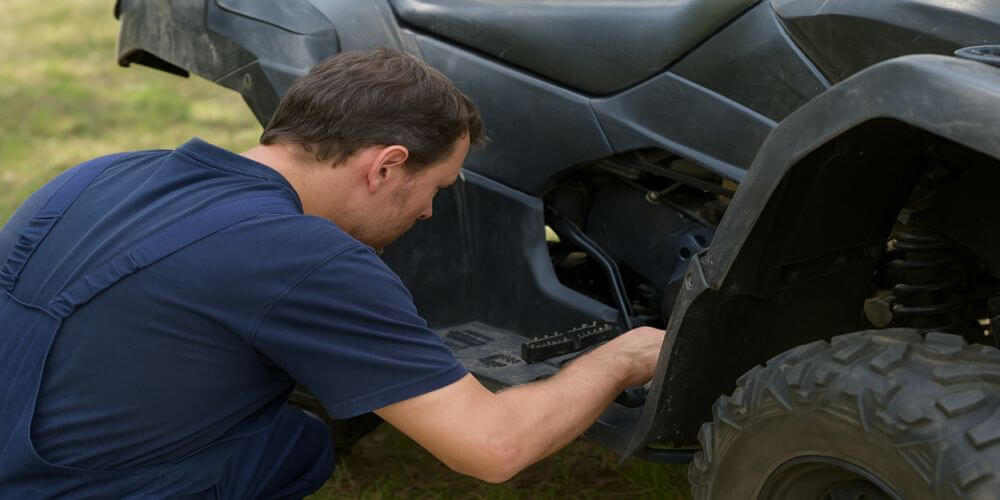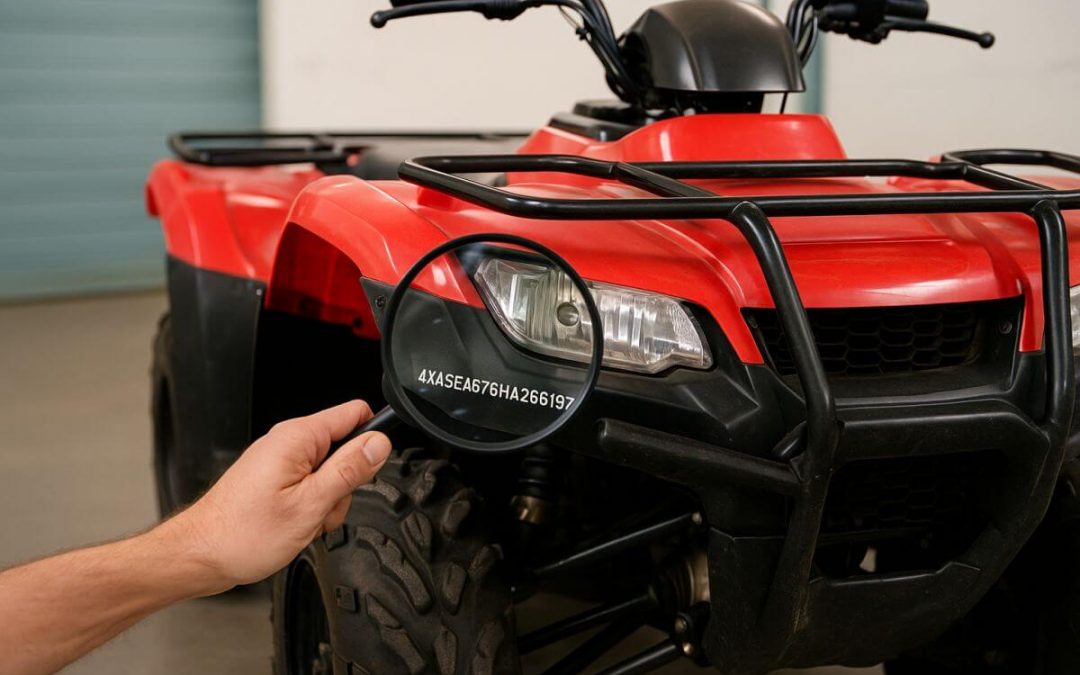Understanding where to find the VIN on an ATV or UTV is crucial for anyone looking to buy, sell, or maintain these vehicles. The Vehicle Identification Number (VIN) is a unique code that provides important details about the vehicle, such as its manufacturer, model, and production year. For buyers and owners, knowing the ATV VIN location or the UTV VIN plate can assist in running a VIN checking report to uncover the vehicle’s history, including any accidents, recalls, or previous ownership details. This information is invaluable for making informed purchasing decisions and ensuring the vehicle’s reliability and safety.

Understanding the Importance of the VIN
The VIN is often referred to as the fingerprint of a vehicle. It consists of 17 characters, including both numbers and letters, that serve as a unique identifier. This number is essential for several reasons:
- Vehicle History Reports: By using a VIN, potential buyers can access reports that reveal a vehicle’s past, including any accidents or title issues.
- Specifications and Features: The VIN can be decoded to reveal specific features and specifications, helping owners understand their vehicle better.
- Legal and Insurance Requirements: Many states require the VIN for registration and insurance purposes.
Where to Find the VIN on an ATV
Locating the VIN on an ATV can be straightforward if you know where to look. Here are common areas where the VIN might be located:
- Frame: The VIN is often stamped on the frame of the ATV. Check the left side of the frame, near the footrest or the steering column.
- Under the Seat: Some manufacturers place the VIN under the seat. Remove the seat and look for a metal plate or sticker.
- Front Grill or Bumper: In some models, the VIN is located near the front grill or on the bumper.
Where to Find the VIN on a UTV
Finding the VIN on a UTV might require a bit of searching, but here are the most common places to check:
- Driver’s Side Frame: Similar to ATVs, UTVs often have the VIN on the driver’s side frame, near the wheel well or under the driver’s seat.
- Engine Bay: Some UTVs have the VIN located in the engine bay area, stamped on the frame or on a metal plate.
- Dash or Console: Look on the dashboard or console area for a VIN sticker or plate.
How to Use a VIN Decoder
After locating your VIN, using a VIN decoder is the next step to uncovering valuable information about your ATV or UTV. A VIN decoder translates the alphanumeric code into useful data about the vehicle’s specifications, manufacturer details, and more. This is especially important when buying a used vehicle, as it helps confirm the authenticity and condition of the vehicle. For a comprehensive report, visit VinCheckPro’s free VIN decoder tool.
Why VIN Decoding Matters
Decoding the VIN provides clarity and confidence in your vehicle purchase. It ensures that the vehicle has not been tampered with and that it matches the seller’s claims. Furthermore, a decoded VIN can reveal any recalls or defects that need addressing, contributing to the vehicle’s safety and performance.
Frequently Asked Questions
How do I locate the VIN if it’s not in the usual spots?
If you cannot find the VIN in the typical locations, consult the owner’s manual or contact the manufacturer. They can provide guidance specific to the make and model of your ATV or UTV.
Can the VIN be found on the vehicle’s documents?
Yes, the VIN is often listed on the vehicle’s title, registration, and insurance documents. These can be useful if the VIN plate is difficult to locate or has been removed.
Why might a VIN be missing or unreadable?
A VIN might be missing or unreadable due to damage, tampering, or wear over time. If you suspect tampering, it’s important to investigate further as this could indicate potential issues with the vehicle’s history.
Are there any apps or tools to help locate a VIN?
Yes, several mobile apps and online resources can assist in locating the VIN on your vehicle. These tools often provide diagrams or photos for guidance.
What should I do if the VIN on the vehicle doesn’t match the documents?
If there’s a discrepancy between the VIN on the vehicle and the documents, it could indicate a clerical error or a more serious issue like VIN cloning. It’s crucial to resolve this before proceeding with any transaction.


